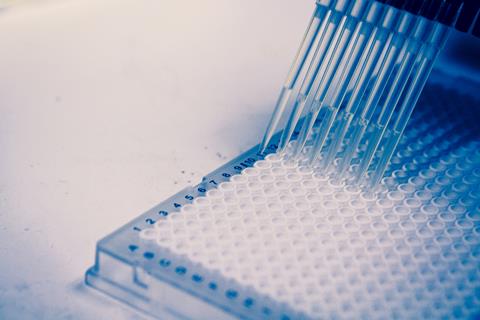This article was first published in The Microbiologist in 2022.
One of the major drivers of the upsurge of multidrug-resistant bacteria in the ecosystem is the irrational use of antimicrobial agents in the animal health sector. As part of this, the aquaculture industry plays a crucial role in the rapid dissemination of antimicrobial-resistant (AMR) bacteria.
The indiscriminate use of antibiotics in aquaculture as part of prophylaxis and disease management creates selective pressure, thereby allowing AMR bacteria to proliferate in the aquatic system. The possibility of the rapid spread of antibiotic resistance genes (ARGs) from the aquatic to the non-aquatic environment through horizontal gene transfer (HGT) raises public health concerns. Most of the antibiotics used in aquaculture are, significantly, also used in humans. Thus, the emergence of resistance to such antibiotics restricts the therapeutic spectrum in human infections.
The eminent epidemiologist John Prescott once summarised the complex AMR scenario as ‘resistance anywhere is resistance everywhere.’ Considering the impact of AMR on global consumer health, it is essential to implement continuous monitoring processes and surveillance programmes throughout the aquaculture sector. AMR surveillance includes collection, validation, analysis, and documentation of significant microbiological and epidemiological data on AMR and the extent of antimicrobial use (AMU) in the aquaculture system. This sort of monitoring helps in the formulation of appropriate management measures and adequate substitution strategies.
”Resistance anywhere is resistance everywhere.” - John Prescott
The fight against AMR needs a multi-dimensional approach as it involves humans, animals, food and the environment. Different countries have undertaken initiatives in collaboration with WHO, the Food and Agriculture Organization (FAO) and the World Organisation for Animal Health (OIE) to launch national and international awareness networks to mitigate the AMR problem in aquaculture. Successful implementation of the network programme will be a key component of tackling AMR for the protection of human health, animal health and food safety all over the world.
Successful source-tracking of AMR bacteria through case-based surveillance, with full susceptibility profiling, is required and has been found to be useful in previous studies. Antibiotic residues can be detected in the aquatic environment through various methods and their removal could resolve the issue to a great extent. WHO introduced different global action plans by developing different diagnostic tools and optimising AMU to combat the threat posed by AMR. While considering methods for AMR containment, it is essential to link AMU data with AMR surveillance data. In the fisheries sector, standard operating procedures were developed as part of the network programme for the isolation, identification and antimicrobial susceptibility testing of microbes.
Since the measurement of AMR rates based on a few isolates is inadequate for understanding the extent of AMR in the system, isolation and identification methodologies need to be strengthened. In the case of aquatic isolates, minimum inhibitory concentration (MIC) values can be calculated using epidemiological cut-off values based on the frequency of distribution of susceptibility results. Determining the multiple antibiotic resistance (MAR) index is critical in evaluating the exposure of antibiotics to the environment. Hence the maximum number of antibiotics needs to be selected for antibiotic susceptibility tests using disc diffusion or agar dilution methods. Different statistical software such as WHONET has been established for the antibiogram profile analysis following CLSI guidelines. Around 70% of studies are following CLSI protocols.

In addition to antibiotic susceptibility tests, phenotypic assays can also be used for assessing the production of ARGs encoding proteins. Production of β-lactamases and efflux pump activity of the pathogens can be detected through chromogen-based assays. However, antibiotic resistance/susceptibility testing based on phenotypic traits alone may not produce robust information and hence genotypic characterisation of AMR should be considered for a better understanding.
It is reported that nucleic acid sequence-based surveillance is more precise than phenotypic testing to combat AMR. The genetic structure of the manifested resistance should be unravelled to determine the molecular mechanism behind the expression of resistance-establishing proteins. As documented by WHO’s Global Antimicrobial Resistance Surveillance System (GLASS), loop-mediated isothermal amplification (LAMP), lateral flow immunoassay (LFIA), line probe assays (LPA), whole-genome sequencing (WGS), next-generation sequencing (NGS) and fluorescence in situ hybridisation (FISH) are the general molecular diagnostic methods for AMR surveillance. ARG-harbouring gene cassettes and integrons are usually integrated within mobile genetic elements (MGEs) like plasmids and transposons. Hence detection of such gene determinants and conjugation studies are pivotal in evaluating the extent of AMR spread through HGT.
Nowadays, multiplex PCR is widely used for the simultaneous screening of multiple variants of ARGs. Different primers used for the PCR detection of ARGs in aquaculture are listed in our review and will serve as a referral document for researchers in the field. Besides qualitative analysis, the abundance of ARGs in the aquatic environment can be determined through quantitative methods like real-time PCR. For the generation of comprehensive AMR profiles, omics-based approaches are now widely followed to avoid the delay associated with culture-based methods. Metagenomic analysis and high-throughput Illumina sequencing, coupled with the structured sub-database of the Comprehensive Antibiotics Resistance Database (CARD), facilitates the annotation and categorisation of ARG sequences. Several freely accessible bioinformatics resources and online databases such as AMRFinder, ResFinder, ARG-ANNOT, SRST2, GeneFinder, ARIBA, MEGARes and KmerResistance are available for the in silico analysis of AMR determinants. Metaproteomics can also be incorporated for the molecular characterisation of entire proteins involved in AMR.

Thus, through understanding the genetic component and entire protein complement involved in resistance, effective management strategies can be developed. In addition to the above, rapid detection tools are a prerequisite to obtain reliable results within a limited time frame. Several commercial and automated kits such as NucliSENS EasyQ KPC, Xpert Carba-R cartridge from GeneXpert, eazyplex system and AID ESBL all provide a platform, without the need of a thermocycler, for rapid detection of specific AMR genes within a few hours.
As discussed above, timely detection of AMR pathogens in aquaculture is a pressing need, in order to further reduce their impact on the entire ecosystem. Once the relevant information has been obtained through various surveillance programmes, regulation policies for the prudent use of antibiotics can be implemented. Alternative strategies like immune stimulation, herbal pharmaceuticals, probiotics and phage therapy could also be adopted as remedies to overcome the threat. Advances in biotechnology, genetic engineering and synthetic chemistry have opened up new avenues in the search for therapies that can be used as substitutes for antibiotics.
The long battle with AMR can be won by working together with an honest implementation of a One Health approach. One Health is a validated, integrated and holistic approach that is being advocated by WHO, FAO and OIE for combating health threats to humans and animals through human–animal–environment interfaces. This concept warrants multi-disciplinary, multi-sectoral and multi-institutional coordination and collaboration to attain optimal health for humans, animals, plants and the environment. Though previous reviews are available on selected aspects, there is a dearth of exhaustive analyses on an issue of such paramount importance.
The review on which this article is based addresses various culture-dependent and -independent methodologies and techniques, which can be utilised to unravel AMR in the field of aquaculture. These findings are of great significance and may shed light on the complexity of the AMR menace and pave a better way for future research.








No comments yet